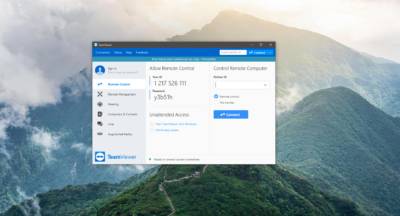

Attackers most commonly take advantage of an organization’s poor credential hygiene and legacy configurations or misconfigurations to find easy entry and privilege escalation points in an environment. Some attackers prioritize organizations with higher revenues, while others prefer specific industries for the shock value or type of data they can exfiltrate.Īll human-operated ransomware campaigns-all human-operated attacks in general, for that matter-share common dependencies on security weaknesses that allow them to succeed.

Most ransomware attackers opportunistically deploy ransomware to whatever network they get access to, and some even purchase access to networks from other cybercriminals. All ransomware is a form of extortion, but now, attackers are not only encrypting data on compromised devices but also exfiltrating it and then posting or threatening to post it publicly to pressure the targets into paying the ransom. Ransomware attacks have become even more impactful in recent years as more ransomware as a service ecosystems have adopted the double extortion monetization strategy. Attackers are also often more determined to stay on a network once they gain access and sometimes repeatedly monetize that access with additional attacks using different malware or ransomware payloads if they aren’t successfully evicted. Attackers can use those weaknesses to elevate their privileges to steal even more valuable data, leading to a bigger payout for them-with no guarantee they’ll leave their target environment once they’ve been paid. Unlike the broad targeting and opportunistic approach of earlier ransomware infections, attackers behind these human-operated campaigns vary their attack patterns depending on their discoveries-for example, a security product that isn‘t configured to prevent tampering or a service that’s running as a highly privileged account like a domain admin. We coined the industry term “human-operated ransomware” to clarify that these threats are driven by humans who make decisions at every stage of their attacks based on what they find in their target’s network. Within this category of threats, Microsoft has been tracking the trend in the ransomware as a service (RaaS) gig economy, called human-operated ransomware, which remains one of the most impactful threats to organizations. This industrialization of the cybercrime economy has made it easier for attackers to use ready-made penetration testing and other tools to perform their attacks. In the same way our traditional economy has shifted toward gig workers for efficiency, criminals are learning that there’s less work and less risk involved by renting or selling their tools for a portion of the profits than performing the attacks themselves.

The cybercriminal economy is a continuously evolving connected ecosystem of many players with different techniques, goals, and skillsets. That depth of signal intelligence gathered from various domains-identity, email, data, and cloud-provides us with insight into the gig economy that attackers have created with tools designed to lower the barrier for entry for other attackers, who in turn continue to pay dividends and fund operations through the sale and associated “cut” from their tool’s success. Microsoft Security tracks more than 35 unique ransomware families and 250 unique threat actors across observed nation-state, ransomware, and criminal activities. Microsoft processes 24 trillion signals every 24 hours, and we have blocked billions of attacks in the last year alone.
#Protocol negotiation failed teamviewer 10 update
June 2022 update – More details in the Threat actors and campaigns section, including recently observed activities from DEV-0193 (Trickbot LLC), DEV-0504, DEV-0237, DEV-0401, and a new section on Qakbot campaigns that lead to ransomware deployments. July 2022 update – New information about DEV-0206-associated activity wherein existing Raspberry Robin infections are used to deploy FakeUpdates, which then leads to follow-on actions resembling DEV-0243. September 2022 update – New information about recent Qakbot campaigns leading to ransomware deployment. Microsoft Purview Data Lifecycle Management.Microsoft Purview Information Protection.Information protection Information protection.Microsoft Priva Subject Rights Requests.Microsoft Purview Communication Compliance.Microsoft Purview Insider Risk Management.Risk management & privacy Risk management & privacy.Microsoft Defender External Attack Surface Management.Microsoft Defender Vulnerability Management.Azure Active Directory part of Microsoft Entra.


 0 kommentar(er)
0 kommentar(er)
